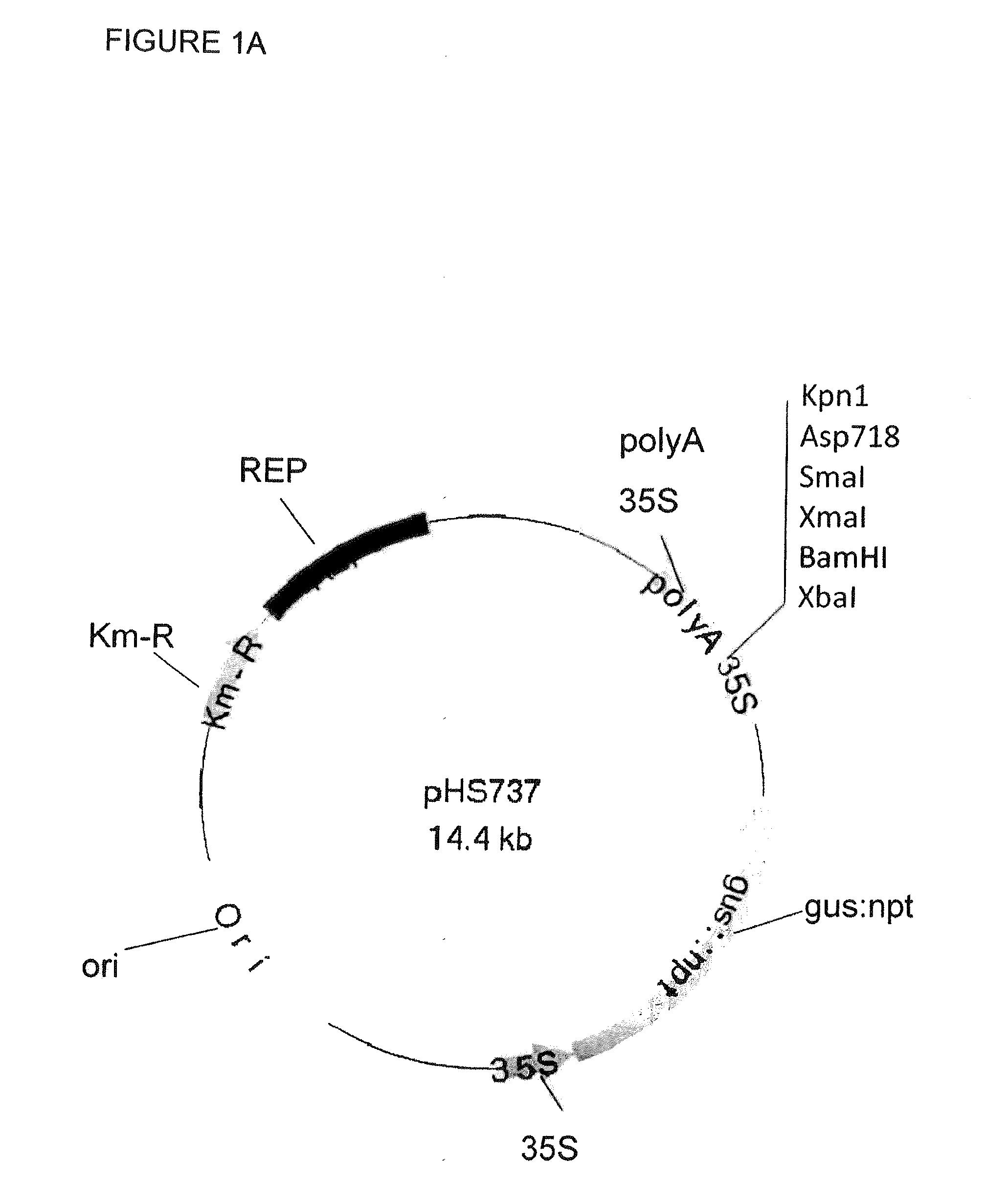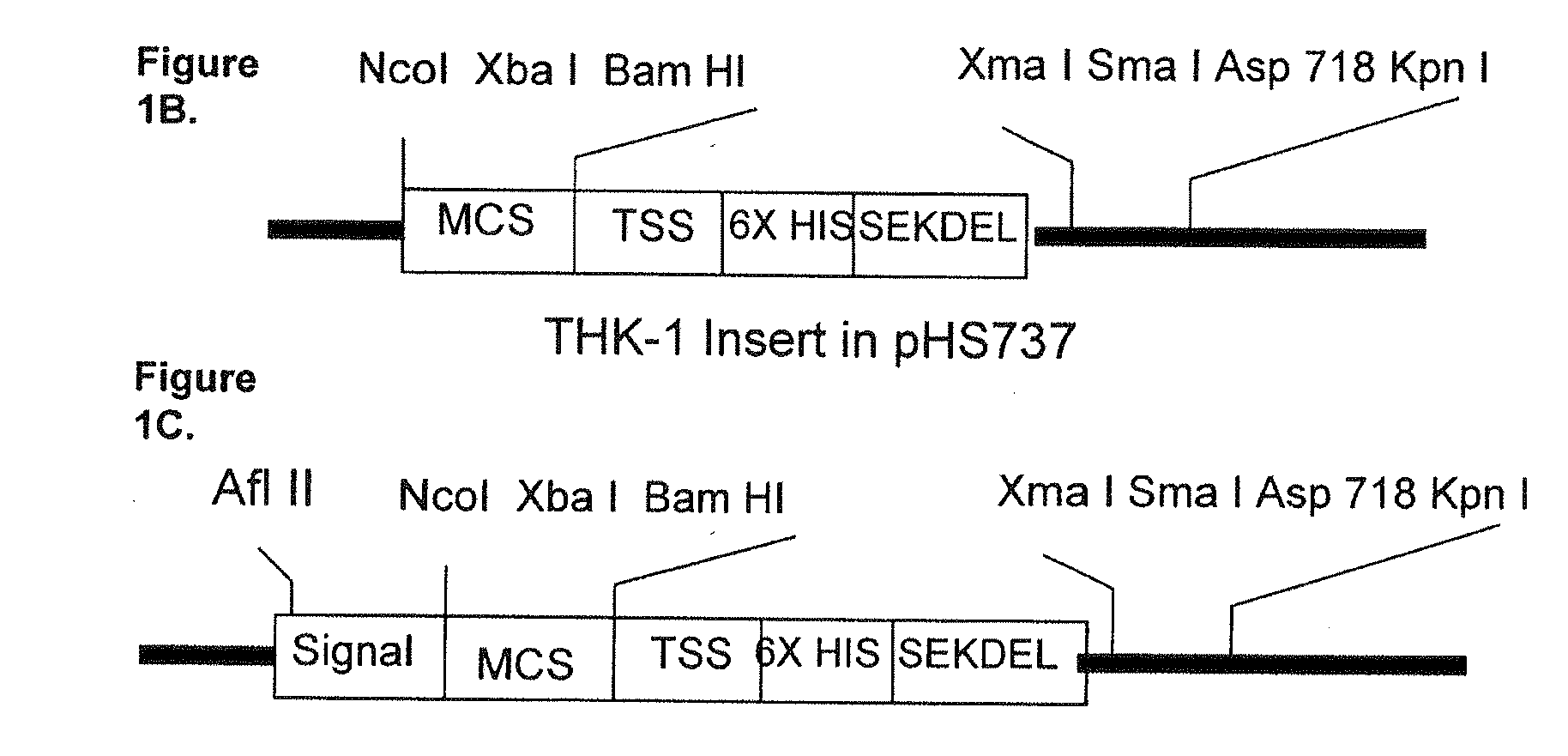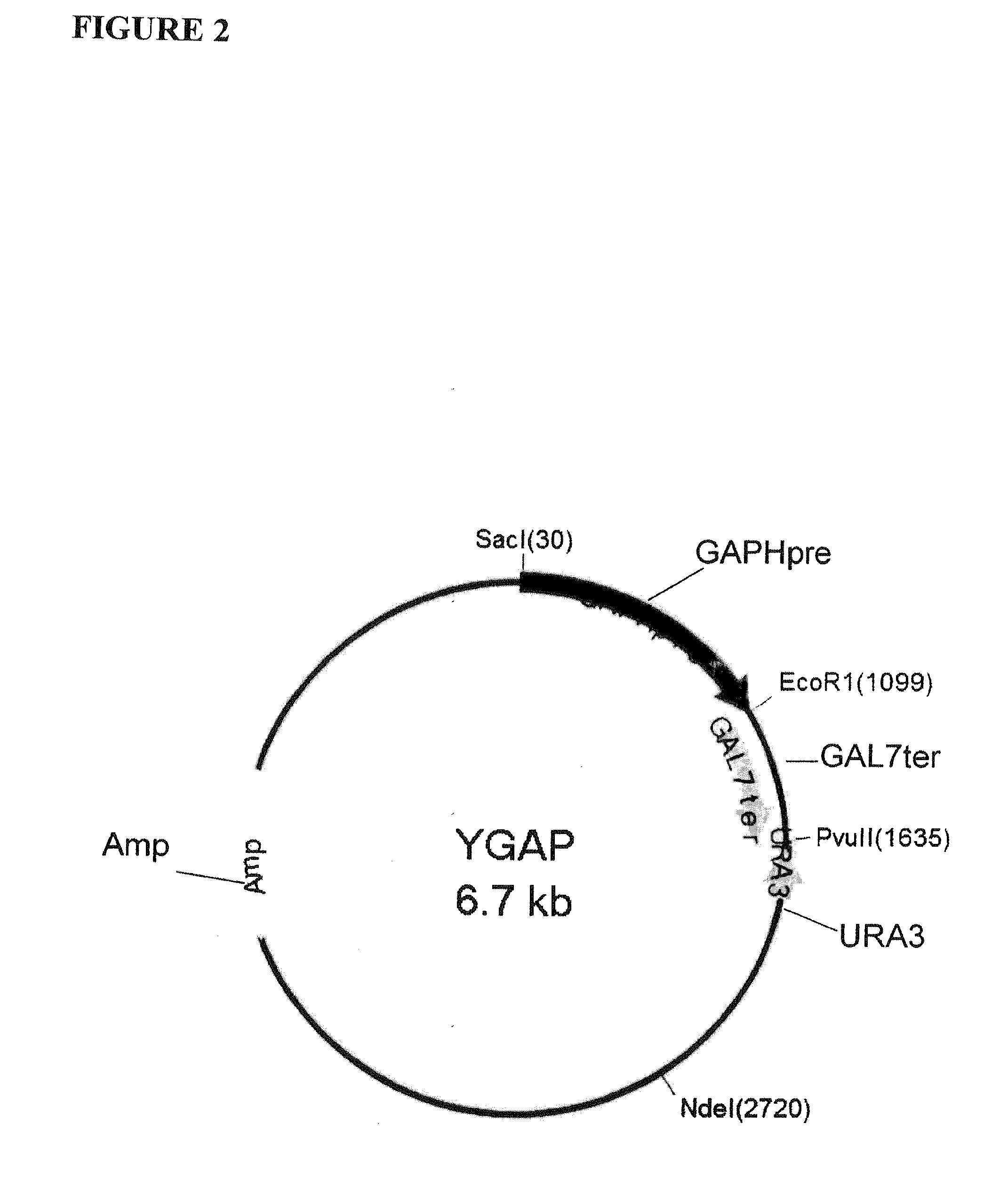Multi epitope vaccine for poultry
a multi-epitope, vaccine technology, applied in the field of vaccines, can solve the problems of reducing weight gain, delayed maturity and often death, and close to $1 billion (us) of economic losses yearly
- Summary
- Abstract
- Description
- Claims
- Application Information
AI Technical Summary
Benefits of technology
Problems solved by technology
Method used
Image
Examples
example 1
Construction of Multiple Epitope Proteins (MEP)
[0149]Five recombinant MEP proteins, MEP1, MEP2, MEP3, MEP4 and MEP5, were constructed by combining a variety of short peptide sub-units identified from the literature, as described herein.
[0150]The peptide sub-units were identified from four different species of Eimeria, namely E. tenella, E. acervulina, E. maxima or E. necatrix, at different life stages and cellular locations. Sub-unit peptides were identified from the following proteins: NPmz19 (Tajima, et al, 2003, Avain Dis. 47: 309-318); Mzp5-7, (Binger et al, 1993, Mol. Biochem. Parasitol 61: 179-187); Eamzp35, (Jenkins, 1988, Nucl. Acids Res. 16: 9863); Easz22, (Jenkins et al, 1989, Mol. Biochem. Parasitol. 32: 153-161); Etmic5, (Brown et al, 2000, Mol. Biochem. Parasitol. 107: 91-102); Etmic4, (Tomley et al, 2001, Int. J. Parasitol. 31:1303-1310); Etmic2, (Tomley et al, 1996, Mol. Biochem. Parasitol. 79: 195-206); Em100, (Pasamontes, et al, 1993, Mol. Biochem. Parasitol. 57: 17...
example 2
Nucleic Acids Sequences Encoding Plant Optimised MEP's
[0168]Plant expressible DNA sequences incorporating SEQ ID NO: 6-10 encoding MEP 1-5 respectively, were generated via a computer program devised to select codons for maximum expression in plants. The DNA sequences were constructed essentially as described by Stemmer et al. (Gene 164: 49-53, 1995). Briefly, tens of overlapping oligonucleotides of 40 bases each were synthesized using standard phosphoramidite chemistry. Equal volumes of each oligonucleotide were added to a standard PCR reaction consisting of 10 mM Tris-HCl pH 9.0, 1.5 mM MgCl2, 50 mM KCl, 0.2 mM each dNTP, 0.1% triton X-100 and 1 u Tag DNA polymerase. The PCR program consisted of 55 cycles of 94° C. for 30 seconds, 52° C. for 30 seconds and 72° C. for 30 seconds. Approximately 2 μl of the resulting mixture was added to a 100 μl PCR reaction mixture as described above and amplified via 30 thermal cycles of 94° C. for 30 seconds, 50° C. for 30 seconds and 72° C. for 3...
example 3
Recombinant MEP Subunit Protein Expression in Bacterial Cells
[0171]Transformation of Bacteria Cells
[0172]Coding sequences for MEP1, MEP2, MEP3, MEP4 and MEP5 subunit proteins (SEQ ID NO:6-10) respectively were inserted into pGEX vector using the Eco R1 and Xho I restriction sites and transformed into E. coli BL-21 bacterial cell line. The plasmids were confirmed on a 1% agarose gel and working concentrations were confirmed through spectrophotometer analysis. Essentially the transformation protocol for MEP0 (pGEX empty vector) MEP1, MEP2, MEP3, MEP4 and MEP5 vectors into E. coli BL-21 cells is as follows. Approximately 10 ng of plasmid was added to 50 ul E. coli BL-21 cells and incubated on ice for 30 minutes followed by a 30 second heat shock at 42° C. The heat shocked BL-21 cells were put back on ice and 250 ul SOC medium was added and the cells were incubated at 37° C. shaker for 1 hr 225 rpm. The transformed BL-2I cells were plated on Lauria Broth (LB) agar plates with Ampicillin...
PUM
| Property | Measurement | Unit |
|---|---|---|
| thermal melting point | aaaaa | aaaaa |
| OD | aaaaa | aaaaa |
| OD | aaaaa | aaaaa |
Abstract
Description
Claims
Application Information
 Login to View More
Login to View More - R&D
- Intellectual Property
- Life Sciences
- Materials
- Tech Scout
- Unparalleled Data Quality
- Higher Quality Content
- 60% Fewer Hallucinations
Browse by: Latest US Patents, China's latest patents, Technical Efficacy Thesaurus, Application Domain, Technology Topic, Popular Technical Reports.
© 2025 PatSnap. All rights reserved.Legal|Privacy policy|Modern Slavery Act Transparency Statement|Sitemap|About US| Contact US: help@patsnap.com



